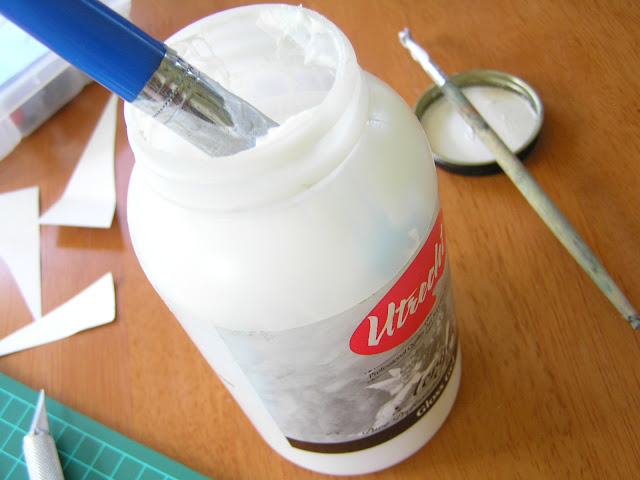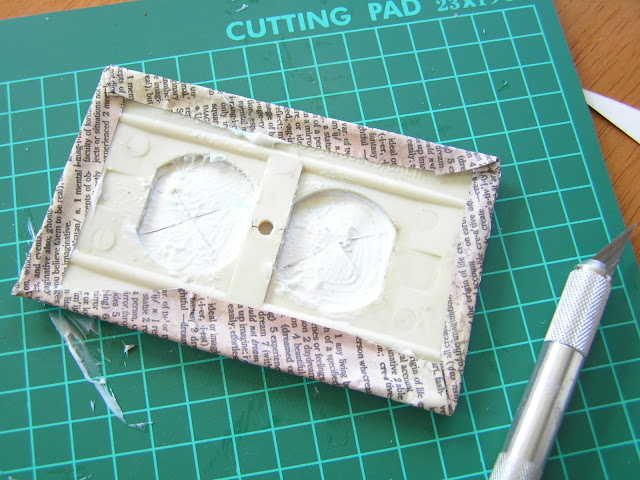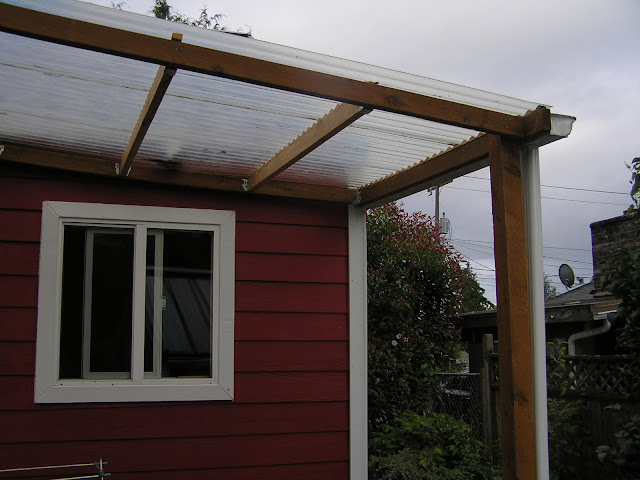Easy Artsy Lightswitch Plate Covers
I have no tolerance for dingy white walls- they MUST be painted!- and I feel the same way about ubiquitous off-white plastic lightswitch plate & outlet covers. Things that we have to look at all the time should be beautiful. This simple process will transform plain covers into, well, anything you want them to be.
I've always enjoyed cutting and pasting magazine pictures. I doubt I've ever read a National Geographic without tearing out a few choice, gorgeous photos to use in some later art project. You don't have to use magazine pages for this, but they happen to be a nice thickness that is easy to work with. Thicker paper is a bit harder to fold around the openings, but it will still work. In the above picture, I used thicker scrapbooking paper for the outlet cover on the right. Origami paper would probably be perfect, and some of it is so beautiful. If you have some fabric scraps that you like, that would work as well as long as it's not too thick.
The only materials I use are an old 1/2" paintbrush and a tub of clear acrylic gloss, an exacto knife and a cutting pad. If you don't have a cutting pad, you can use a flattened cereal box or some cardboard under the knife. Or, just use scissors.
First, lay the plate you want to cover over your picture. Cut the paper around the edges of the plate, leaving enough extra paper to fold around the back of the plate. Paint the entire underside of the paper with the acrylic gloss, and center the plate over it. Fold the edges up, applying extra gloss if needed to get all the corners to lay flat.
Then, make an "X" cut in the openings of the plate. Gently fold these flaps back and secure them to the back of the plate. The paper will be a bit soft and stretchy from the acrylic on it, but work gently with it so it doesn't tear. Make sure to poke a hole in it wherever the screw will need to go in.
Flip it over; the hard part is done. Now, just hold it carefully and paint a nice solid layer of gloss over the whole front side. This will protect the picture and make it shiny. Below is what they look like when they're wet- the gloss goes on white but will dry clear, eventually revealing your picture in all its glory:
While they dry, I balance them on top of a vase or bottle, so they don't become glued to the work surface. They require a few hours to dry; overnight is probably a good idea so they're not tacky at all when you install them.
Below are some examples:
Have fun, and good luck! I'd love to see what you come up with :)
Below are Amazon Affiliate Ads. Any purchase made through them helps support our family. Thanks in advance!























